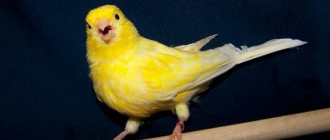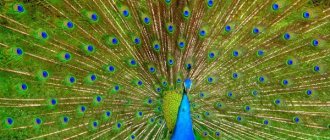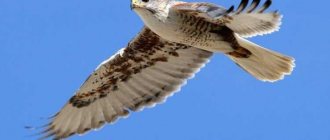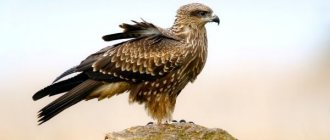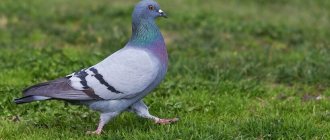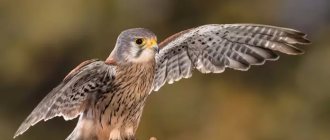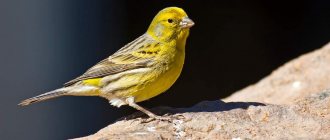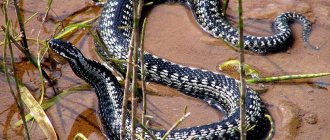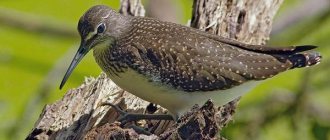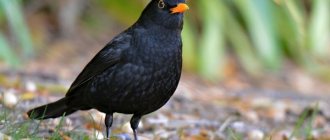- Wild animals
- >>
- Birds
Little canary birds are known all over the world for their amazing vocal abilities. The canary is so named because it was once brought by explorers from the Canary Islands. Today it is a fairly common pet. Its popularity as a pet lies in the fact that it does not require any special care. The bird adapts quite quickly to new environmental conditions and feels comfortable at home.
Origin of the species and description
Photo: Canary
The canary belongs to the chordate vertebrates, is a representative of the class of birds, the superorder New Palatine, the order Passeriformes, the suborder of songbirds, the family of finches, the genus of canary finches, the species of Canary canary finches, the subspecies of house canaries.
Since those times when discoverers brought from various overseas and unexplored countries writings about various outlandish representatives of the animal world, people first learned about the canary. Scientists, explorers and sailors not only described a small bird that sings amazing trills, but also brought drawings with its image. Subsequently, several amazing birds from the Canary Islands were brought to Europe. It was thanks to the region of their habitat, which was considered the immediate homeland of birds, that they were called canaries.
Video: Canary
After the first birds arrived in Europe, they were quickly brought to Russia and became very popular and in demand as pets. Gradually, people learned to properly care for canaries, and subsequently breed them. Canaries became so popular that in some regions entire villages and settlements were engaged only in breeding and raising birds, making cages and perches for them.
During the period of domestication, birds have changed quite a bit. Domestic canaries have a number of distinctive features from their relatives - wild canary finches. This is clearly manifested in the size of the body, the color scheme of the plumage, as well as the manner in which they perform their trills.
Appearance and features
Photo: Canary bird
Canaries are small, bright birds. Domesticated individuals have larger body sizes than wild birds. The average domestic canary has a body length of 13-15 centimeters. The body size, taking into account the wingspan, is about 23-25 centimeters. However, there are individuals that have larger or smaller dimensions. These small songbirds have very harmonious, correctly proportioned bodies. On a small body there is a rounded, small head.
The birds' eyes are black, round, and very expressive. On the head there is a light, most often yellowish, pin-shaped beak. The color of the plumage can be varied. The most common color is deep yellow. However, there are individuals with a different plumage color.
What plumage colors are possible in canaries:
- white;
- chocolate color;
- greenish tint;
- all sorts of shades of brown;
- honey;
- orange;
- the presence of red feathers is possible (the result of crossing a canary with a fire siskin).
Canaries tend to sometimes change the color of their plumage depending on climatic conditions. There are individuals that have a crest, or feathers with specific waves. The birds have rather thin but tenacious limbs with long claws. Today it is customary to distinguish more than a hundred species of ornamental poultry. Each species has specific external features, body size, and color.
How to determine the sex of a canary
It can be difficult for an inexperienced poultry breeder to determine the sex of representatives of this species. There are several groups of signs indicating the sex of a bird. The owner of a feathered pet should be guided by their totality, without relying only on any one sign.
Appearance
Sexual dimorphism in artificially bred breeds is weakly expressed or completely absent, so it is not always possible to reliably determine gender by appearance. You should pay attention to the following signs:
- Tail position. The canary is taken in the hand. In this case, the back of the bird’s body should be in a free state. In this position, the tail of the canary will go down, and the tail of the canary will rise up.
- Tail length. This indicator can also be determined by holding the bird in your hand. In addition, the length of the tails of several individuals can be compared when they are sitting quietly on a perch in a cage. Males usually have a longer tail than females, but this statement is only true for birds of the same age.
- Plumage color. This feature can be used to determine sex only in naturally colored canaries. Wild females differ from males in duller plumage, in which gray and greenish shades predominate. In artificially bred breeds, male and female individuals are equally brightly colored. The only difference can be seen in the color of the plumage around the beak: in boys this area is more intensely colored.
- Shape of the chest and abdomen. This indicator is assessed by looking at the bird from the side. The male canary usually has a more defined belly and less defined chest. In females, on the contrary, the breasts are more pronounced and the abdomen less pronounced.
- Head shape. Head shape is also assessed by looking at the bird in profile. The canary has a rounder and more convex head, with a well-developed forehead. In a canary, the top line of the head is flattened, the forehead is less developed.
- Shape of the cloaca. This indicator is recommended to be assessed during the breeding season, when visual differences in the structure of the cloaca become clearly visible. The female's cloaca is round in shape, while in the male it is pointed and looks like a cylinder. The feathers on the boy's cloaca are longer, while on the girl they are shorter and arranged in a corolla.
Behavior
You can distinguish a male from a female canary by behavioral characteristics. Kenars are usually more lively and active, while females are calmer. During the nesting period, the behavior of birds changes: the female takes a more active part in the nest construction process than the male. During the mating season, Kenar mainly looks after his partner and feeds her. When the nest is ready, the canary begins to call its partner with sounds and crouches on the perch.
Singing
Only the male sings in canaries. Girls have other sounds: chirping, cooing, whistling. These sounds are quieter and shorter lasting than those of boys. A characteristic feature of canaries is their luscious singing, thanks to which this species of songbird has gained worldwide popularity.
On a note! In some cases, females can also sing, especially when kept alone. However, their songs are simpler, shorter and monotonous, without clear lines. When a male moves in, the females usually stop singing.
Canary methods
Experienced canary fishermen often use their own methods when determining the sex of birds, but for a beginner it can be difficult to distinguish a female from a male using these characteristics. Canary breeders look for the following traits:
- Egg shape. If the 2 poles of the egg have different shapes (one is round, the other is pointed), then a canary will hatch from it. If both poles of the egg are the same, the female will hatch.
- Behavior of chicks. If, on the 5th-7th day of the chicks' life, you gently tap their beaks with your finger, the boys will pull their heads up and rise on their paws. If you do the same procedure with feathered chicks ready to fly out of the nest, the girls will immediately press into the nest, and the boys will first make a dash to the side, as if trying to escape.
- Behavior of adult birds. If you take an adult canary in your hand and run your finger over its belly, the female will tuck her paws and the male will begin to struggle and jerk his limbs.
- Position of the eyes relative to the beak. If, when looking at a bird from the side, you mentally draw a line through the junction of both halves of the beak, in boys the eye will be located on it, and in girls it will be higher.
- The shape of the goiter when singing. A singing canary's crop swells, but a female's crop does not.
Where does the canary live?
Photo: Russian Canary
Today, the canary is a domesticated, ornamental bird. The ancestors and ancestors of this species were wild birds - Canary finches. The Canary Islands were considered their natural habitat. The islands have the most favorable climatic conditions for year-round habitat of birds. Under natural conditions, birds most often live in forest areas in mountainous areas. They can often be found near human settlements, as well as in small settlements and rural areas. Canary finches tend to lead a sedentary lifestyle. They choose a certain territory in which they spend almost their entire lives.
Canaries are completely undemanding to living conditions. At home, they require virtually no special care. To keep them you will need a cage in which the birds will have to spend most of their time. To keep poultry at home, it is best to choose a spacious metal cage, since it is very easy to wash and can be disinfected if necessary. In the cage, be sure to install a mirror, a swing, a sippy cup and a feeder. Mandatory attributes include poles and crossbars, which should be placed at different levels.
What does a canary eat?
Photo: Male canary
The canary is considered an unpretentious bird that does not pick at its food. However, those who decide to start one at home should remember that proper, balanced nutrition is the key to the health and life expectancy of a bird. The main food source for birds is food of plant origin - seeds, various types of vegetation. During the nesting and breeding season, birds can feed on insects, larvae, caterpillars, etc.
When living at home, birds are recommended to buy food designed specifically for feeding canaries. At the same time, it is worth paying attention to the specific stage of life for which this food is created. For example, for the molting or breeding period, a type of food is intended that contains the optimal amount of vitamins and minerals for this period. The average amount of dry food for one adult is 2 teaspoons per day.
What serves as the bird's food source:
- grain crops: oats, millet, barley, wheat, corn, buckwheat, rice, canary seed;
- seeds of various types of succulent vegetation: quinoa, dandelion, plantain;
- bran;
- rape;
- nuts;
- sunflower seeds;
- berries;
- ripe fruits - grapes, apricots, cherries, sweet apples, peaches;
- dried fruits: figs, dried apricots, raisins, prunes, dates;
- fresh vegetables.
In the cold season, it is recommended to supplement the diet with branches of various varieties of trees and shrubs - maple, cherry, raspberry, hawthorn, rowan, beech, willow, elderberry. Sometimes songbirds can be pampered with various products of animal origin - low-fat cottage cheese, a small amount of honey, boiled eggs, insects. There is also a list of products that are contraindicated for these birds.
Products that are contraindicated:
- parsley dill;
- potato;
- mango;
- papaya.
Interesting fact: Birds tend to lead an active, mobile lifestyle. However, individuals kept at home are limited in space and may become obese.
Now you know what to feed the canary. Let's take a look at how a songbird lives in the wild.
Interesting Facts
Birds are distinguished by their active lifestyle. At the same time, if they are not fed properly, they are at risk of obesity.
The owner will have to:
- monitor your diet;
- develop a menu;
- reduce grain consumption.
The breeder is obliged to monitor safety and take care of health. This does not mean that they have to be released into the room to free space. If the apartment is inhabited by animals that instinctively hunt, then it will not be possible to hide from aggressors indoors.
The bird will begin to fuss, push against the wall and furniture, and if it sees an open window, it will definitely break free. There are even more dangers there. The pet is not accustomed to obtaining food for itself; an unfamiliar environment will lead to death.
During a free walk in the house, dangerous situations await the canary:
- iron not turned off;
- burning gas burner;
- curtains where it is easy to get tangled;
- a gap - from where you can’t go back to a cozy cage.
Of course, the bird will be interested in flying in a larger space, but canine breeders do not recommend engaging in such activities in order to protect the bird’s life from injury and unnecessary stress. By the way, another interesting fact. Rubina gained enormous popularity for her novel “Russian Canary” So even writers name their trilogies after the songbird.
Features of character and lifestyle
Photo: Female canary
By nature, canaries are endowed with a calm, peaceful character. It is worth noting that males are somewhat calmer and friendlier towards humans than females. Accordingly, males adapt faster and easier to the home environment and get used to people. Those who plan to acquire this small but very singing bird are recommended to get young individuals. Mature birds are characterized by quarrelsomeness. It is difficult for them to get used to people. In some cases, they tend to show aggression.
Birds that come to humans when they are no longer young lead a familiar lifestyle. They are not inclined to change their habits or adapt to people. To change some habits, you will have to make an incredible amount of effort. If a young animal enters the house, at first it is necessary to disturb it as little as possible. She needs time to adapt. When communicating with birds, you should try to avoid sudden, impulsive movements and loud sounds.
Birds that are direct relatives of the house canary, canary finches are considered very inquisitive and sociable birds. Under natural conditions, they really need the company of their relatives and exist exclusively in packs. The size of the flock may vary. Most often, these birds fly at low altitudes without rising high. Flocks fly from tree to tree, or from bush to bush, in search of the required amount of food. During their movements, they constantly communicate with other members of the flock.
With the onset of darkness, small flocks of birds unite into large flocks and look for a suitable tree for the night. They spend the night in this composition and at dawn they again divide into noisy flocks. Bird breeders should remember that the canary is a songbird, so it will create a lot of noise in the house.
Lifestyle and habitat
Historical facts will help you understand where canaries came from in such diversity and how they lived in the wild. Birds were brought from the Canary Islands back in the 16th century. First they appeared in Cadiz, then Italy recognized them. Beautiful melodies attracted breeders, who began to actively distribute singing creatures for home keeping.
the male canary was sold . But such restrictions have not stopped the spread. I met the birds in Tyrol, Germany.
Breeders got involved in their work, began to select and improve plumage colors. In Russia, even before the revolution, factories were created for the breeding and population of canaries. They were sorted for sale and transported to markets.
The Canary and Azores islands are still the homeland of these singing creatures, where they live free and wild, gathering in large or small flocks. They are very sociable, flying through low bushes in search of food; the birds constantly chirp with their relatives.
In the evening the working day ends, they flock together for a general overnight stay, only to scatter in groups again in the morning to go about their business. In the world community, over 500 years, canaries have become domesticated pets. Their owners keep them in cages, care for them, and feed them. In response, the breeders hear spilling trills.
Social structure and reproduction
Photo: Canary in nature
In birds living in natural conditions, the breeding season begins with the onset of spring. Warm weather and sufficient food indicate that the time has come for procreation. At home, canaries can breed year-round if suitable conditions are available.
Mostly birds breed between the ages of one and a half to four and a half years. One adult, sexually mature female is capable of laying several clutches in one life cycle. When kept at home, it is better not to allow her to do more than two to prevent excessive stress on her small body. It is best to equip the canary with several nests in the form of a sphere and attach a perch close to it.
After two individuals converge, after 10-12 days the first egg may appear. After this, every day the female lays another egg. Their total number does not exceed 4-5 pieces. Canary eggs are small in size and weigh no more than 2-3 grams. They are light, with a bluish tint and small dark inclusions.
After laying eggs, the female incubates them. She practically does not leave her post until the chicks hatch from the eggs. They appear in the same order in which the eggs were laid. Competition immediately arises among the birds that are born. The older and stronger take food from the younger and weaker. Often because of this, weak individuals die from lack of food. Because of this, when kept at home, canaries are given artificial eggs instead of laid eggs. Once all the eggs have been laid, they are returned to the bird and she begins to incubate all the eggs at the same time.
After the chicks are born, the female feeds them for one month. After a month, the chicks learn to fly and gradually prepare for independent life. The period of sexual maturity is reached at one and a half years. Average life expectancy is 10 years. If kept at home and given good care, life expectancy can increase to 15 years.
Keeping and caring for poultry
Keeping canaries is not such a difficult matter, the main thing is to create comfortable conditions for it. For one individual, the cage dimensions should be 30 cm in height, at least 35 cm in length, and 22-25 cm in width. The distance between the rods should not be more than 1.5 cm. For two canaries, the cage dimensions should be increased.
It is advisable that the cage have a double bottom, this will make cleaning it much easier. Inside the cage there must be two thin perches made of wood, their surface must be rough.
Most canaries love water procedures, and therefore, in order for the bird to have the opportunity to bathe, a deep container with water at room temperature is placed several times a week. After bathing, the container is immediately removed.
Note!
- How to protect a gazebo from rain and wind in summer and snow in winter - a review of the best options
Chicken - description, types, classification, nutrition and maintenance of domestic chicken (115 photos and videos)
Fretka - lifestyle, care and character traits. 115 photos and videos tips for keeping a pet ferret
They also benefit from flying around the room, which they also do several times a week. Before this, it is necessary to close all windows and vents, remove other animals and small children from the room. It is also advisable to close the curtains on the windows to prevent birds from hitting the glass.
While the bird is flying around the room, you can clean the cage, not only clean it of debris and feces, but also pour boiling water over it and treat it with a weak solution of potassium permanganate.
Birds need to be fed with balanced food; almost any specialized store sells food for canaries, both regular and intended for molting.
It is recommended to add sunflower seeds without peel and crushed buckwheat to the food. Once or twice a week you need to give a little boiled egg. Do not forget about the greens and the supply of calcium to the bird (the source of calcium is chalk or crushed eggshells).
It is important to avoid bird obesity; the total amount of feed per day should not exceed 2 tablespoons; it is best to throw away stale feed.
Natural enemies of canaries
Photo: Canary bird
When living in natural conditions on the Canary Islands, canaries have quite a lot of enemies. Predators lie in wait for them even in the dark. The threat lurks not only for them, but also for nests with eggs and defenseless chicks. Canaries are very nimble and mischievous birds that constantly scurry back and forth, thereby revealing the location of their nest.
During flights during daylight hours, they often become prey for other large feathered predators - owls, royal kites, and hawks. With the onset of darkness, they are hunted by bats, which are predominantly nocturnal and have excellent orientation in the dark.
Small birds also have many enemies on the surface of the earth. These include rats, representatives of the cat family. Cats and rats eat the chicks that are born and destroy their nests. In addition, rodents are carriers of dangerous infectious diseases. One individual can in a short time infect the entire flock, which subsequently dies.
